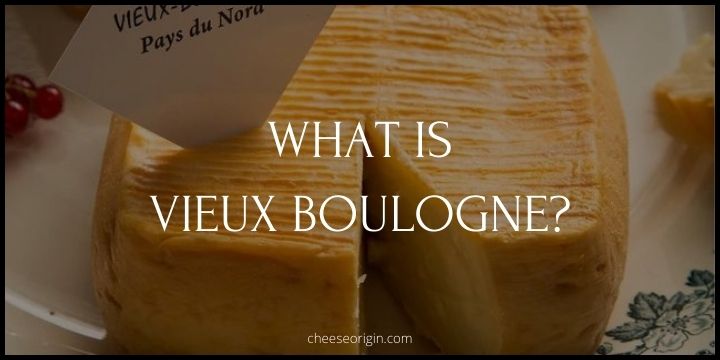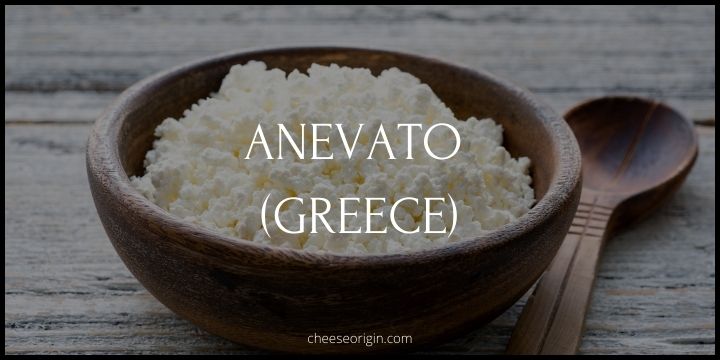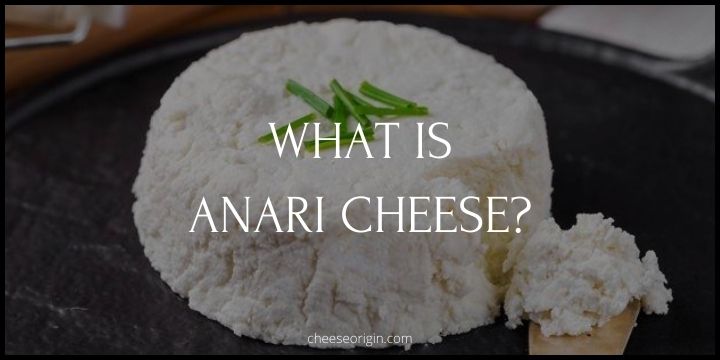What is Dubliner Cheese? From Irish Pastures to Global Tables
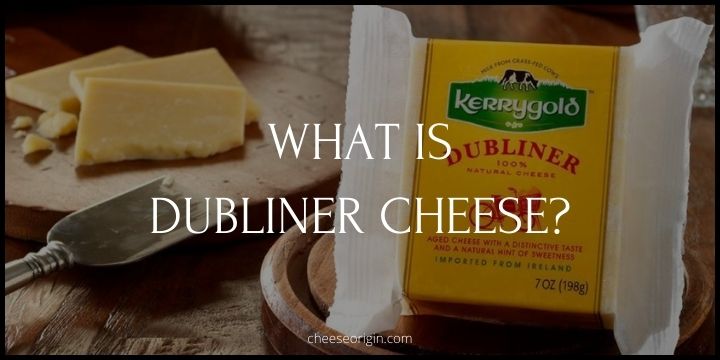
Delve into the world of Dubliner Cheese, a culinary gem that has journeyed from the lush, verdant pastures of Ireland to grace tables across the globe. This distinctive cheese, with its sweet, nutty nuances and a subtle sharp tang, encapsulates the richness of Irish dairy tradition.
Dubliner Cheese is not just a food product; it’s a testament to Ireland’s age-old cheesemaking heritage, a story of taste and terroir, and an enduring favorite on the global gourmet scene.
Quick Facts About Dubliner
| Quick Fact | Description |
|---|---|
| Country of Origin | Originates from Ireland |
| Type of Milk | Made from cow’s milk |
| Texture | Firm, slightly crumbly texture |
| Taste | A unique sweet, nutty flavor with a hint of sharpness |
| Color | Has a natural pale yellow color. |
| Aging Time | Typically aged for 12 months |
| Uses | Versatile and can be used in cooking, grating, or simply enjoyed on its own. |
| Pairing | Pairs well with a variety of wines, particularly full-bodied reds. |
| Nutrition | High in protein and calcium, it’s a nutritious addition to any diet. |
| Availability | While originally from Ireland, Dubliner cheese is now widely available globally. |
| Awards | Dubliner cheese has won several awards, including gold at the International Cheese Awards. |
| Producer | The primary producer of Dubliner cheese is Carbery Group, based in County Cork, Ireland. |
What is Dubliner Cheese?

Dubliner cheese is a culinary delight that hails from the emerald isles of Ireland. This unique cheese is a product of the Carbery Group, located in County Cork. Unlike other Irish cheeses that are steeped in centuries of tradition, Dubliner is a relatively new player in the global cheese scene, but it has quickly made its mark for its distinctive taste and texture.
The magic of Dubliner cheese lies in its complex flavor profile. Crafted from cow’s milk, this cheese offers an enchanting blend of sweet, nutty, and slightly sharp notes. Its taste is often likened to a harmonious fusion of mature Cheddar, Swiss, and Parmesan. This versatility in flavor makes it an ideal ingredient in a variety of dishes, from gourmet recipes to simple snacks.
Dubliner cheese boasts a firm yet slightly crumbly texture, with a natural pale yellow color that speaks of its purity. Aged for 12 months, the cheese develops a richness and depth of flavor that sets it apart from its counterparts.
More than just a treat for the palate, Dubliner cheese is also a nutritional powerhouse, rich in protein and calcium. It’s not just about the taste and health benefits, though. Dubliner cheese is a testament to the art of Irish cheese-making. Despite its relative novelty, it has already won gold at prestigious events like the International Cheese Awards.
Available worldwide, Dubliner cheese represents a slice of Irish heritage on the global stage. Whether you’re enjoying it on a cheese board, grating it over pasta, or savoring it with a glass of full-bodied red wine, Dubliner cheese promises a gastronomic experience that’s both unique and memorable.
What Does Dubliner Cheese Taste Like?
Dubliner cheese is celebrated for its complex flavor profile. It carries a strong, sharp flavor that resembles cheddar, but it also has a dry, crystalline texture and a less creamy mouthfeel. Despite the sharpness, Dubliner cheese also has a natural hint of sweetness, adding to its allure.
Dubliner cheese’s flavor is so versatile that it can be easily substituted in any recipe that calls for aged cheddar. Its unique taste and texture make it a delicious standalone snack and a fantastic addition to various dishes. Whether savored on its own or used in cooking, Dubliner cheese offers an exceptional gastronomic experience.
Dubliner Cheese Tasting Notes
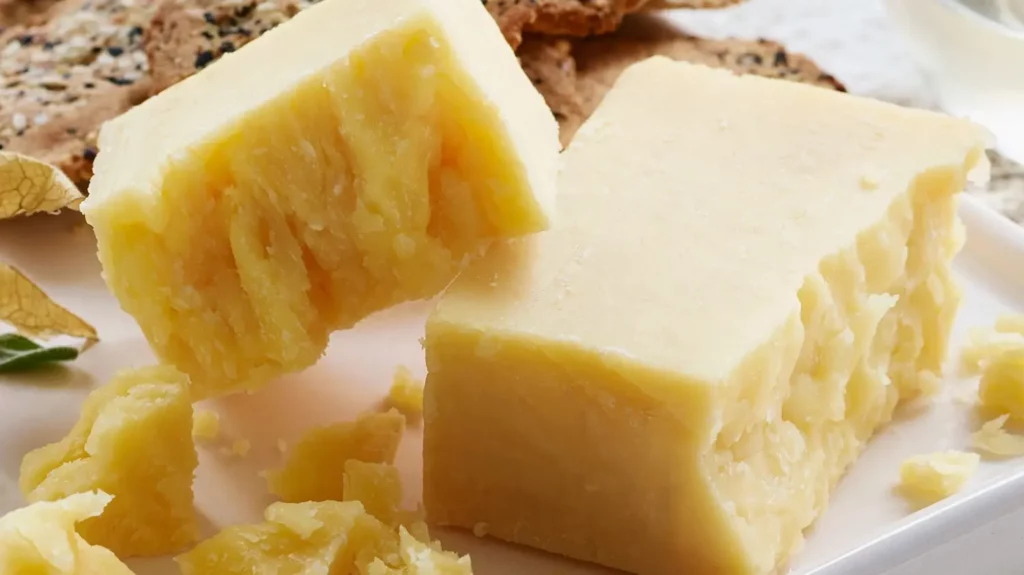
- Texture: Dubliner cheese has a firm yet slightly crumbly texture, akin to a well-aged Cheddar.
- Color: The cheese sports a natural pale yellow hue, reflecting the purity of its ingredients.
- Aroma: Dubliner cheese emits a mild and pleasant aroma, not overpowering but inviting.
- Taste: The taste is a unique blend of sweet, nutty, and slightly sharp flavors. It’s often compared to a mix of mature Cheddar, Swiss, and Parmesan.
- Aftertaste: Dubliner leaves a lingering aftertaste that’s pleasantly sharp and slightly sweet.
How to Eat Dubliner Cheese?
- Cheese Board: Serve Dubliner cheese on a cheese board with a variety of other cheeses, fresh fruits like apples and grapes, and a selection of crackers or crusty bread. Its unique flavor profile makes it a standout addition.
- Cooking Ingredient: Dubliner’s robust taste and firm texture make it an excellent cooking ingredient. Grate it over pasta dishes, use it in quiches, or melt it in grilled sandwiches for a delightful twist.
- Wine Pairing: Enjoy Dubliner cheese with a glass of full-bodied red wine. The complex flavors of the cheese complement the wine’s richness, creating a gastronomic symphony.
- Snack: Slice Dubliner cheese into thin pieces and enjoy as a standalone snack. The combination of sweet, nutty, and slightly sharp flavors is satisfying and moreish.
- Salad Topping: Grate or crumble Dubliner cheese over salads. It adds a burst of flavor and a pleasant, crumbly texture to your greens.
- Baked Goods: Incorporate chunks of Dubliner cheese into your bread dough or muffin mix before baking. The result will be a deliciously cheesy treat with a distinctive flavor.
- Fondue: Melt Dubliner cheese to create a unique fondue experience. Its rich and robust flavor will give your fondue a distinctive twist.
Reminder: Dubliner cheese tastes best when served at room temperature, so take it out of the fridge about an hour before you plan to eat it.
What is the Difference Between Dubliner Cheese and Cheddar?
| Dubliner Cheese | Cheddar | |
|---|---|---|
| Origin | Originated in Ireland, named after the city of Dublin. | Originated in the English village of Cheddar in Somerset. |
| Taste | Has a unique, complex flavor that is sweet, nutty, and slightly sharp. | Known for its rich, nutty flavor which can range from mild to extra sharp depending on the aging process. |
| Texture | It’s a hard cheese but tends to be more crumbly in texture. | It’s also a hard cheese but usually has a denser, smoother texture. |
| Aging Process | Typically aged for 12 months, although some varieties may be aged longer. | Aging can vary widely, from a few months for mild cheddar to up to 2 years or more for extra-sharp varieties. |
| Melting Properties | Melts but not as smoothly or quickly as softer cheeses due to its firmness and lower moisture content. | Known for its excellent melting properties, often used in cooking for this reason. |
| Uses | Often enjoyed on its own, grated over dishes, or included in sandwiches. | Versatile in use, from sandwiches to sauces, and a popular choice for macaroni and cheese. |
10 Best Dubliner Cheese Substitutes
| Substitute | Origin | Description |
|---|---|---|
| Cheddar Cheese | England | A hard, aged cheese with a sharp, tangy flavor. It’s similar to Dubliner but slightly creamier. |
| Swiss Cheese | Switzerland | Known for its nutty, sweet flavor and distinctive holes, it’s less sharp than Dubliner but equally versatile. |
| Gouda | Netherlands | A semi-hard cheese with a rich, creamy, and slightly sweet flavor. It melts well, making it a good substitute in cooking. |
| Jarlsberg | Norway | This semi-soft cheese has a mild, nutty flavor that’s similar to Dubliner. It works well in both cold and hot dishes. |
| Monterey Jack | USA | A semi-hard cheese with a mild, creamy flavor. It’s less sharp than Dubliner but melts well, making it ideal for cooking. |
| Parmesan | Italy | A hard, granular cheese with a strong, nutty flavor. It’s more pungent than Dubliner but can be used in similar ways, especially grated over dishes. |
| Manchego | Spain | A semi-hard cheese with a distinctive flavor profile – slightly salty, nutty, and tangy. It can work as a stand-alone snack or in cooking. |
| Provolone | Italy | A semi-hard cheese with a smooth texture and mild, tangy flavor. It melts well, which makes it a good cooking substitute. |
| Emmental | Switzerland | A medium-hard cheese with a mildly nutty and slightly sweet flavor. It’s less sharp than Dubliner but complements many dishes well. |
| Comté | France | A hard cheese with a complex, nutty, and slightly sweet flavor. It’s similar to Dubliner and can be used interchangeably in many recipes. |
What Pairs Well With Dubliner Cheese?
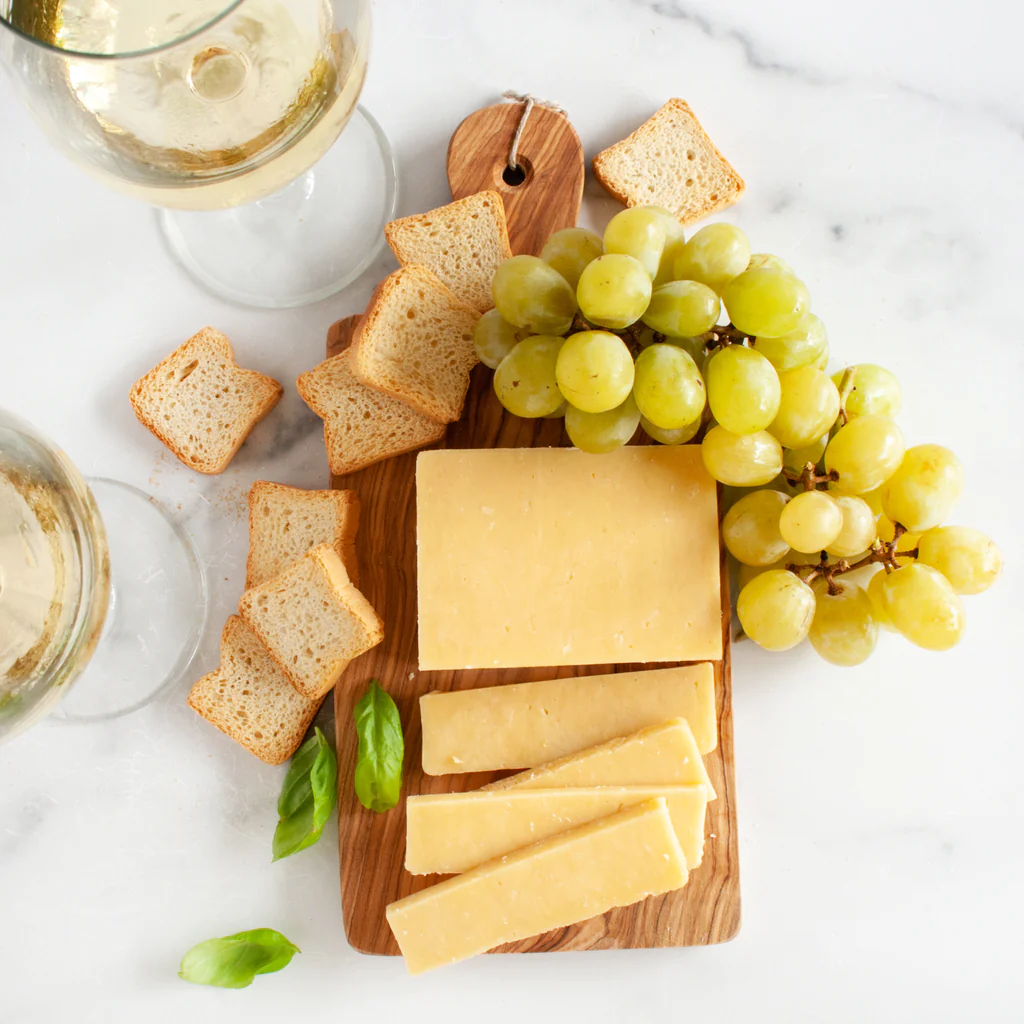
Food that goes well with Dubliner Cheese:
| Category | Food Items |
|---|---|
| Bread/Crackers | Whole grain crackers, crusty baguettes, rye bread, olive ciabatta, walnut bread |
| Fruits/Vegetables | Apples, pears, grapes, figs, dates, celery, cherry tomatoes |
| Meats/Proteins | Smoked salmon, prosciutto, grilled chicken, roast beef, walnuts, almonds |
| Condiments/Jams | Fig jam, honey, mustard, apple chutney, quince paste |
| Desserts | Dark chocolate, almond biscotti, fruit tarts, cheesecake |
| Other Cheeses | Brie, Camembert, Roquefort, Manchego, Gorgonzola |
| Grains/Pasta | Quinoa salad, pasta with pesto, risotto, wild rice |
| Seafood | Grilled shrimp, smoked mackerel, seared scallops |
| Soups/Stews | Tomato bisque, beef stew, French onion soup, lentil soup |
| Salads | Caesar salad, spinach salad with vinaigrette, pasta salad, Greek salad |
Also read: 11 Best Crackers that Pair Well with Cheese
Beverage that goes well with Dubliner Cheese:
| Category | Beverage Items |
|---|---|
| Wine | Full-bodied reds like Cabernet Sauvignon, Merlot, and Zinfandel; Crisp whites like Chardonnay, Sauvignon Blanc |
| Beer | Stout, Porter, Belgian Ale, Pale Ale, Amber Lager |
| Whiskey | Irish Whiskey, Bourbon, Single Malt Scotch |
| Non-Alcoholic | Apple Cider, Grape Juice, Cranberry Juice, Sparkling Water, Herbal Tea |
| Cocktails | Old Fashioned, Manhattan, Negroni, Whiskey Sour |
| Coffee/Tea | Espresso, Black Tea, Green Tea, Chai Tea, Cappuccino |
| Spirits | Brandy, Cognac, Armagnac, Rum |
| Dessert Wine | Port, Sherry, Madeira, Marsala |
| Liqueurs | Baileys Irish Cream, Kahlua, Grand Marnier, Amaretto |
Also read: Best Wine and Cheese Pairings: The Ultimate Guide
Frequently Asked Questions
1. Does Dubliner cheese taste like Parmesan?
Dubliner cheese and Parmesan are both hard, aged cheeses and have a similar texture. However, their taste profiles are distinct. Dubliner cheese has a unique sweet, nutty flavor with a hint of a sharp tang, somewhat like a mature Cheddar. On the other hand, Parmesan is known for its rich, fruity nuttiness and savory, umami notes. While they might have some similarities, Dubliner cheese does not exactly taste like Parmesan. They can be used interchangeably in some recipes, but the difference in flavor will be noticeable.
2. Does Dubliner cheese melt?
Yes, Dubliner cheese does melt. However, it’s worth noting that because of its firmness and lower moisture content, it may not melt as smoothly or as quickly as softer, higher-moisture cheeses like mozzarella or cheddar. When heated, it becomes softer and gooier, but it might not flow as freely as other cheeses. This makes it a good choice for dishes where you want the cheese to maintain some structure when heated, such as in a grilled cheese sandwich or atop a casserole.
3. How long does Dubliner cheese last?
Dubliner cheese, like most hard cheeses, can last a while if stored properly. Unopened, it can generally last between 2 to 4 months in the refrigerator. Once opened, it’s best to consume it within 3 to 4 weeks. However, these are general guidelines and the actual shelf life may vary depending on specific conditions such as the exact temperature of your fridge and how the cheese is stored. To maximize the shelf life of Dubliner cheese, keep it tightly wrapped in the refrigerator when not in use. If you see mold, it’s best to throw the cheese away as the mold could have contaminated the entire piece.
Also read:
- What is Labneh Cheese? A Middle Eastern Culinary Secret
- What is Roncal? A Taste of Spanish Heritage
- What is Cheshire Cheese? A Timeless British Delight
- What is Fromage Blanc? Unveiling France’s Creamy White Delight
- What is Saint Andre? A Decadent Delight from Normandy
- What is Blue Castello? The Creamy Danish Delight
- What is Danish Blue (Danablu)? Denmark’s Favorite Blue Cheese
